Masi is a wine producer that has been innovating for six generations and is still pushing the envelope “using wood as a condiment not an ingredient”
When you look at technical tasting notes it’s customary to see ABV, residual sugar and acidity levels, but when you see in addition the amount of ‘dry extracts’ as grams per litre in a wine you can only be talking of one style of winemaking and in fact one real winemaker, Masi Agricola.

Raffaele Boscaini – still fermenting after all these years
Masi’s unique selling point is the use of appassimento, the art of drying grapes before fermentation, a technique that they use with all of their wines, red, white and now even sparkling.
The bunches of grapes are laid on bamboo racks to dry for anything up to four to five months with natural ventilation, resulting in 35-40% weight loss, then gently pressed. It was Masi who in 1964 with the release of the now legendary Campofiorin effectively made this technique popular again, having spent a lot of the 1950s doing a major study of terroir in the region, identifying single plots and vinifying the grapes separately as Amarone.
The company is steeped in history
Masi hails from the late Eighteenth century, 1772 to be precise. and is named after the valley ‘Vaio dei Masi’ that the Boscaini family acquired to start growing grapes. Mozart was doing his thing across the Alps to give this some context.
Masi is an institution, a wine producer that makes 12 million bottles of wine and distributes them to 90 countries worldwide. Like many major Italian wine producers of this size their website kicks off with a button labelled Family and also has a section on Contemporary Art.
Raffaele’s granddad invented ‘ripasso’ for crying out loud – the technique of adding leftover grape skins from Amarone and recioto fermentation to Valpolicella wines for a period of extended maceration to bring colour and complexity to the second wine. Masi was the first company to commercially sell a bottle of ripasso in the early 1980s and they are credited as rescuing the ancient oseleta grape from extinction and continuing to use it to this day.
OK all very interesting but what were the wines like?
I’m coming to that bit. So, I met up with the company’s marketing manager Raffaele Boscaini earlier in the year for a range tasting – actually seven of Masi’s 35 wines – a tasting that was impressive in the quality on show but which ended with a rare (for me) tasting of Masi’s top two Cru Amarone.
We tasted an interesting range, including their relatively new spumante, rosé, excellent white blends and those gorgeous deep reds.
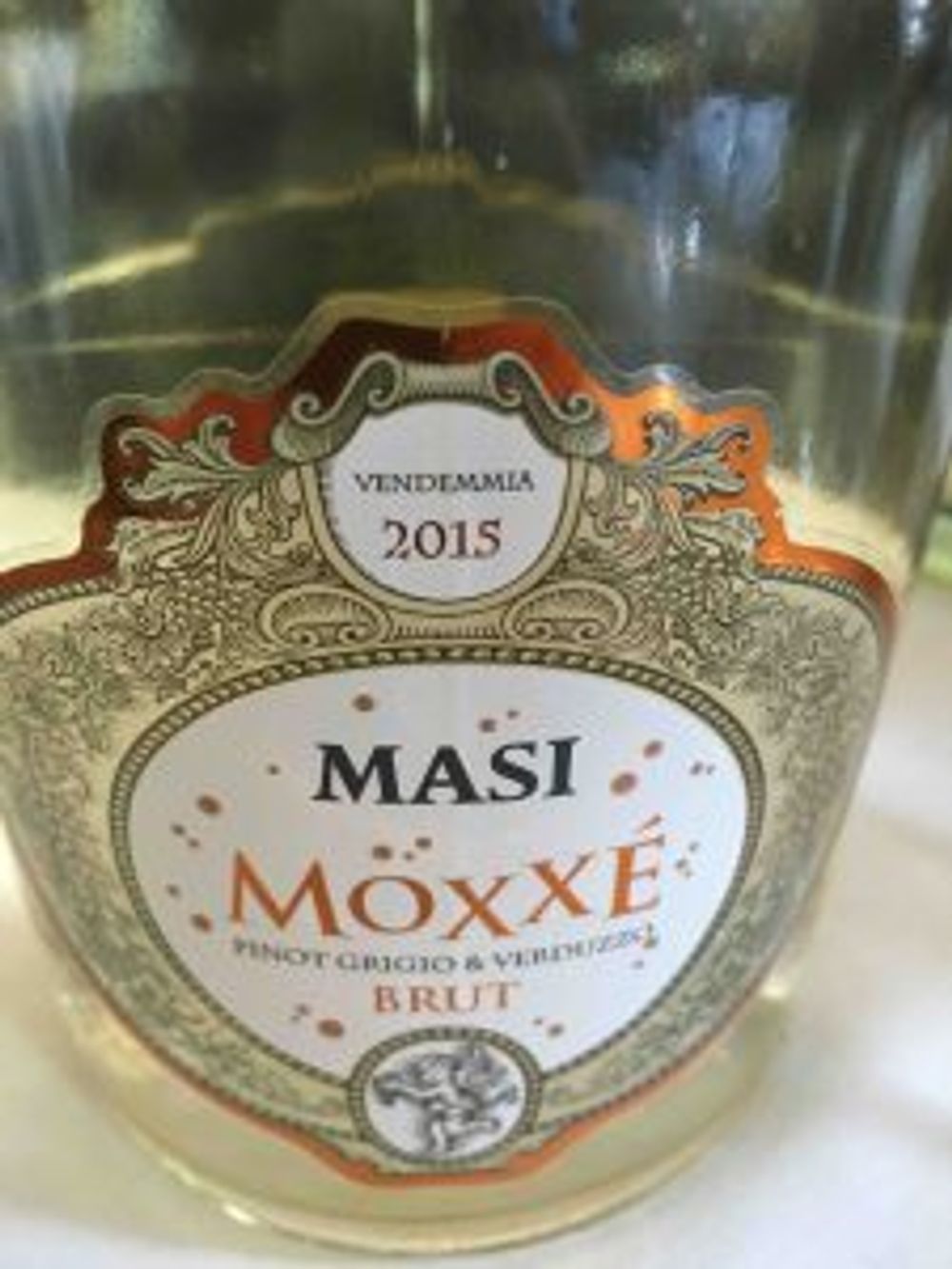
Moxxé 2015
80% pinot grigio, 20% verduzzo.
This is a departure for Masi, a spumante no less. The pinot grigio grapes were picked at the end of August and vinified immediately, the verduzzo grapes were picked at the end of September and left to dry for three weeks on plateaux. The verduzzo is then fermented and that process halted for the wine to be blended and go through the Charmat method. It then undergoes one month maturation.
There was a surprising amount of structure to this wine. It was light and refreshing in a prosecco way but had a real thickness in the mid-palate, what Boscaini calls pinot grigio “with shoulder”. An easygoing sparkler that could work as an aperitif or paired with food. 12% ABV.
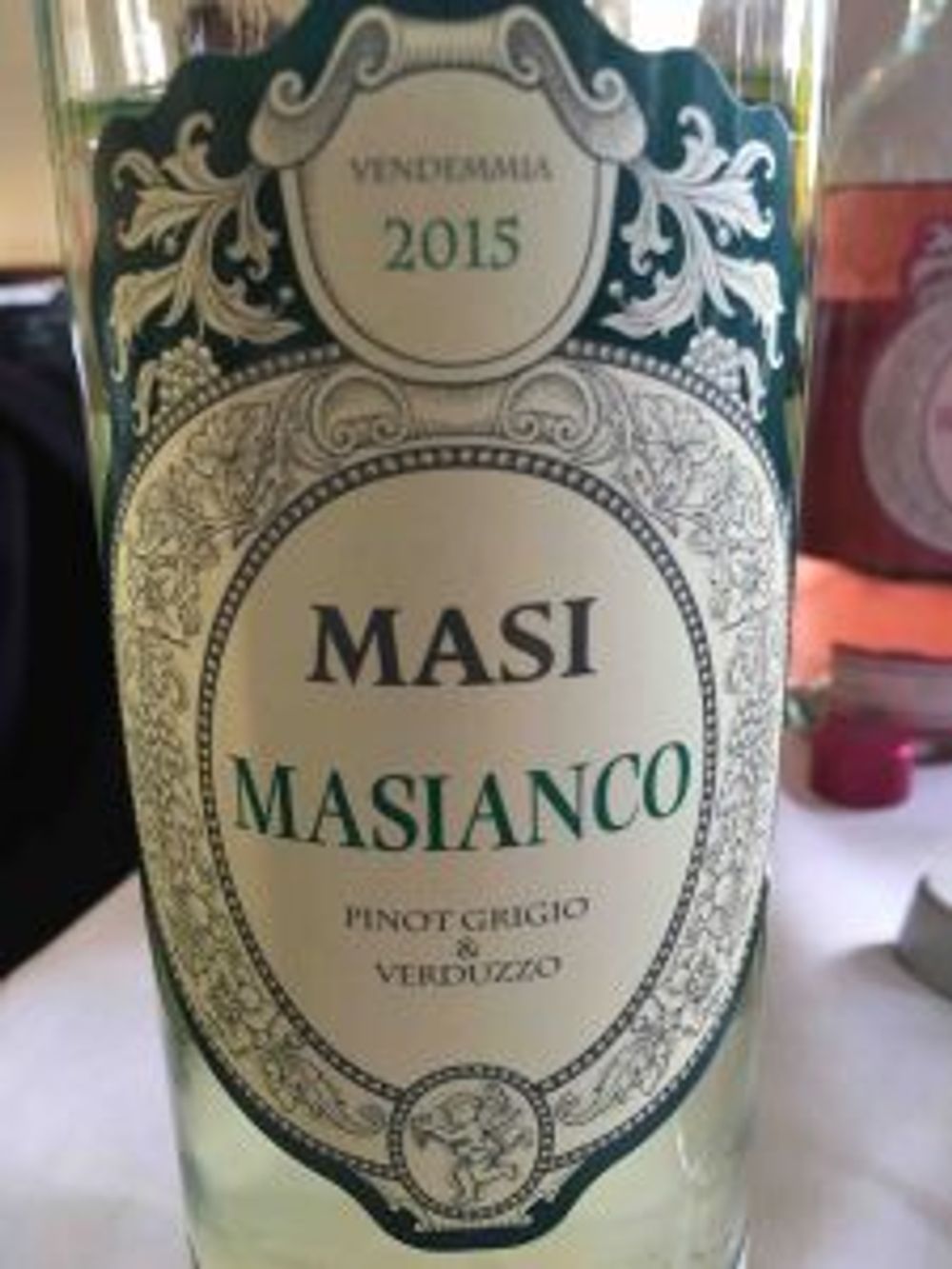
Masianco 2015
75% pinot grigio, 25% verduzzo
The grapes for this wine come from Friuli, are harvested and vinified separately with the verduzzo grapes having been further ripened on racks for three weeks.
Three months in stainless steel tanks for the pinot grigio, barriques for the verduzzo. Once assembled, the wine spent 45 days in bottle.
Masi produces a whopping 500,000 bottles of this easy drinking blend. I found the nose a bit dumb, but this has the drinkability of a pinot grigio with a bit more body to it. It is textured, and has a lovely dry finish, in a refreshing, good way that is. 13% ABV.
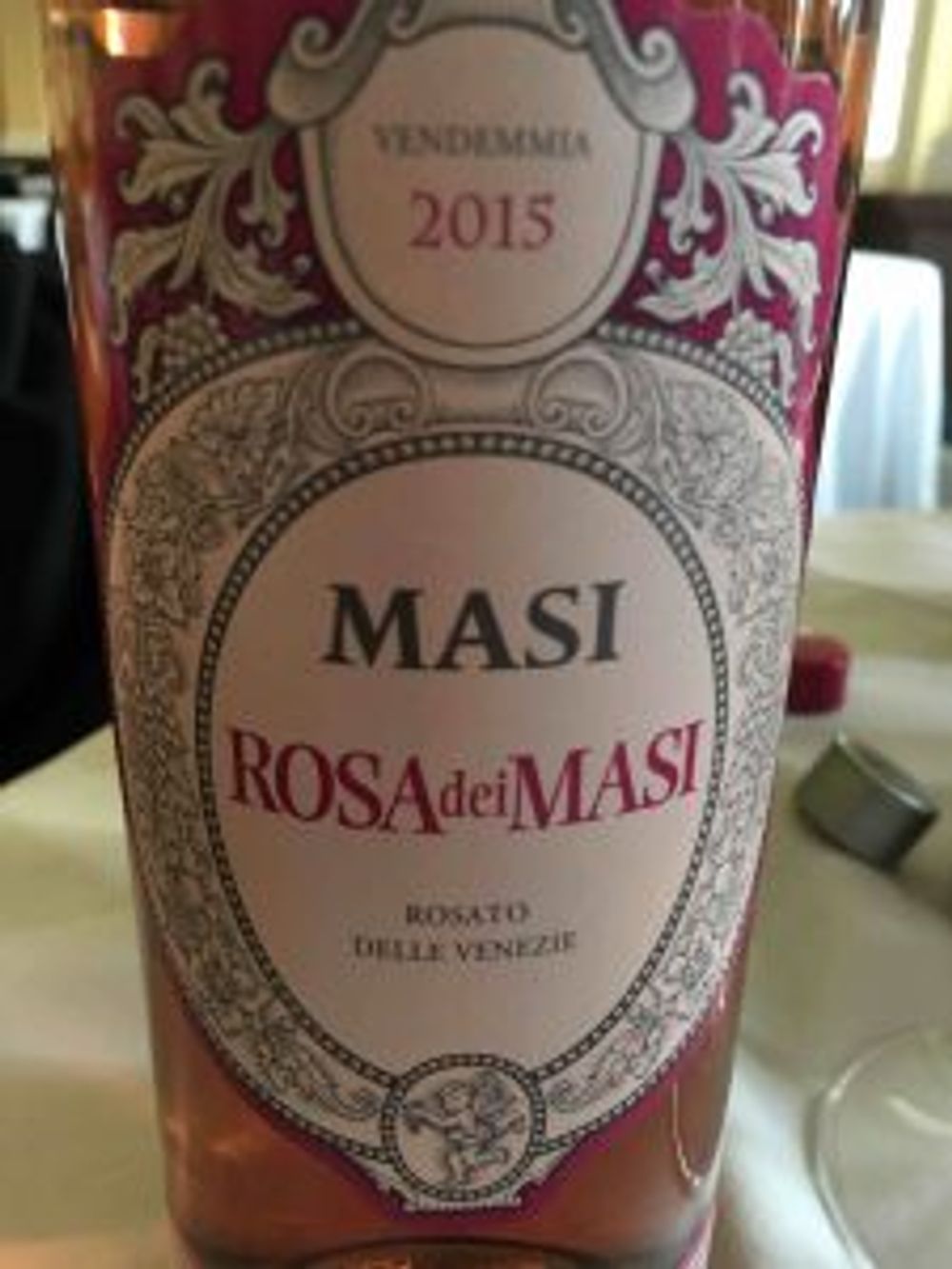
Rosa dei Masi 2015
100% refosco
The grapes for this rosato delle Venezie come from Friuli. Following harvest, 85% of the refosco grapes were ‘freshly’ vinified while the remaining 15% underwent appassimento for approximately 50 days, with gentle pressing and a two hour. 60 days on lees in stainless steel tanks with weekly bâtonnage and plenty of skin contact completed the process.
Refosco is a grape that would be very rough in the mouth which is why 15% of it underwent appassimento for approximately 50 days. This quietens down the spikiness. I really liked this as a rosé, it had a firm structure, plenty of red berry fruit (redcurrants and cherries) and a good finish. Having said that it was also quite generic or as Boscaini puts it “There isn’t much of a story in rosé”. 12.5% ABV.
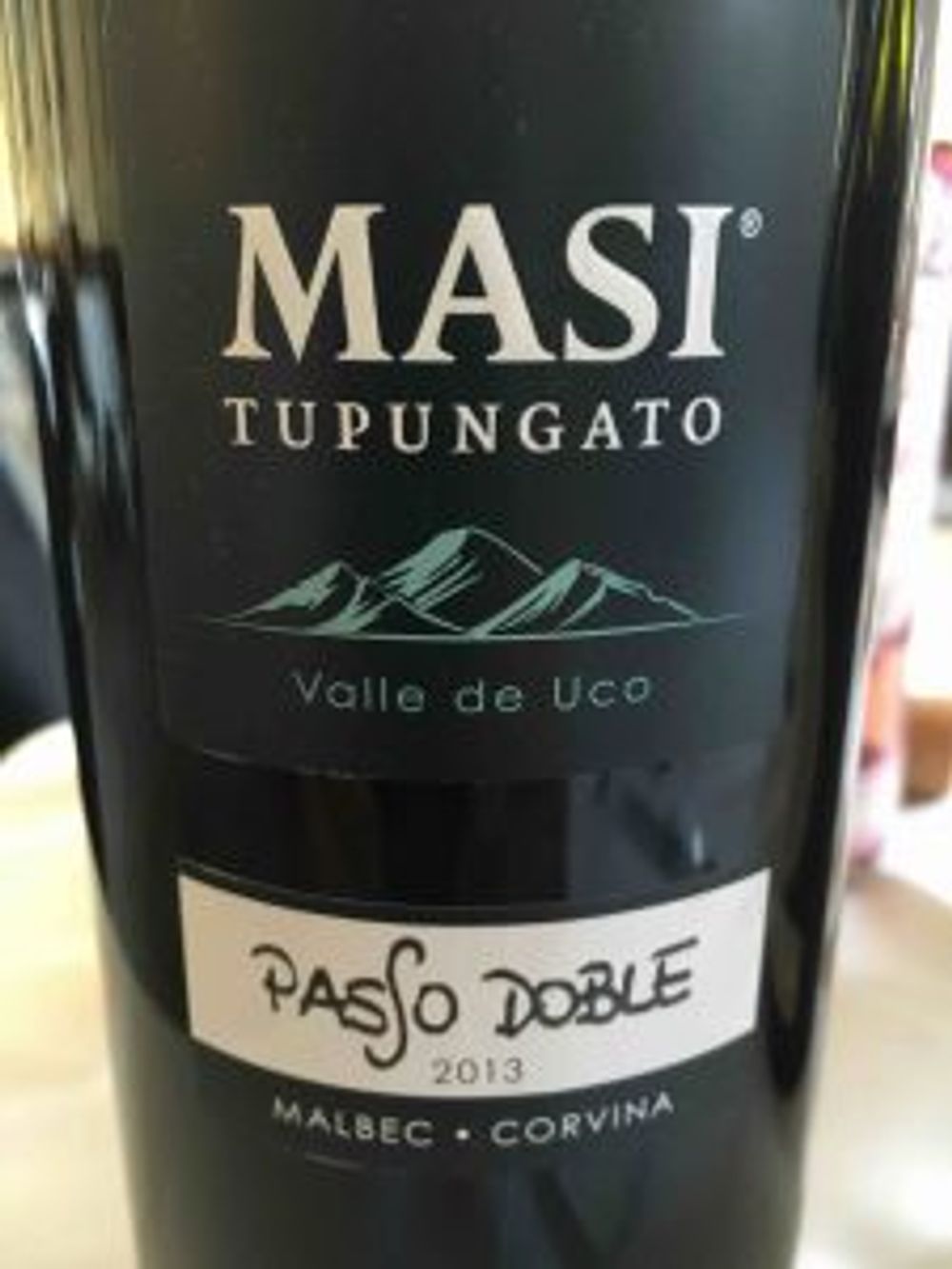
Passo Doble 2013
70% malbec, 30% semi-dried corvina
In 1995 Masi bought an old mint farm in Argentina and this interesting Rosso di Argentina blend is one of three wines produced on the estate, of which they produce 700,000 bottles. After an initial fermentation of the malbec, whole corvina grapes were given a brief appassimento treatment before pressing. This fermentation lasted 15 days and was followed by the final malolactic fermentation.
This is a good food wine and an interesting mix of South America and Venetian style wine making. Corvina brings delicious cherry notes on the finish and counters the structure of the malbec so that it is not too heavy in the mouth. Although the wine has spent nine months in French oak casks (70% second usage, 30% new) you don’t get a big hit of wood. Or, as Boscaini puts it “we use wood like a condiment not an ingredient.” 13.5% ABV
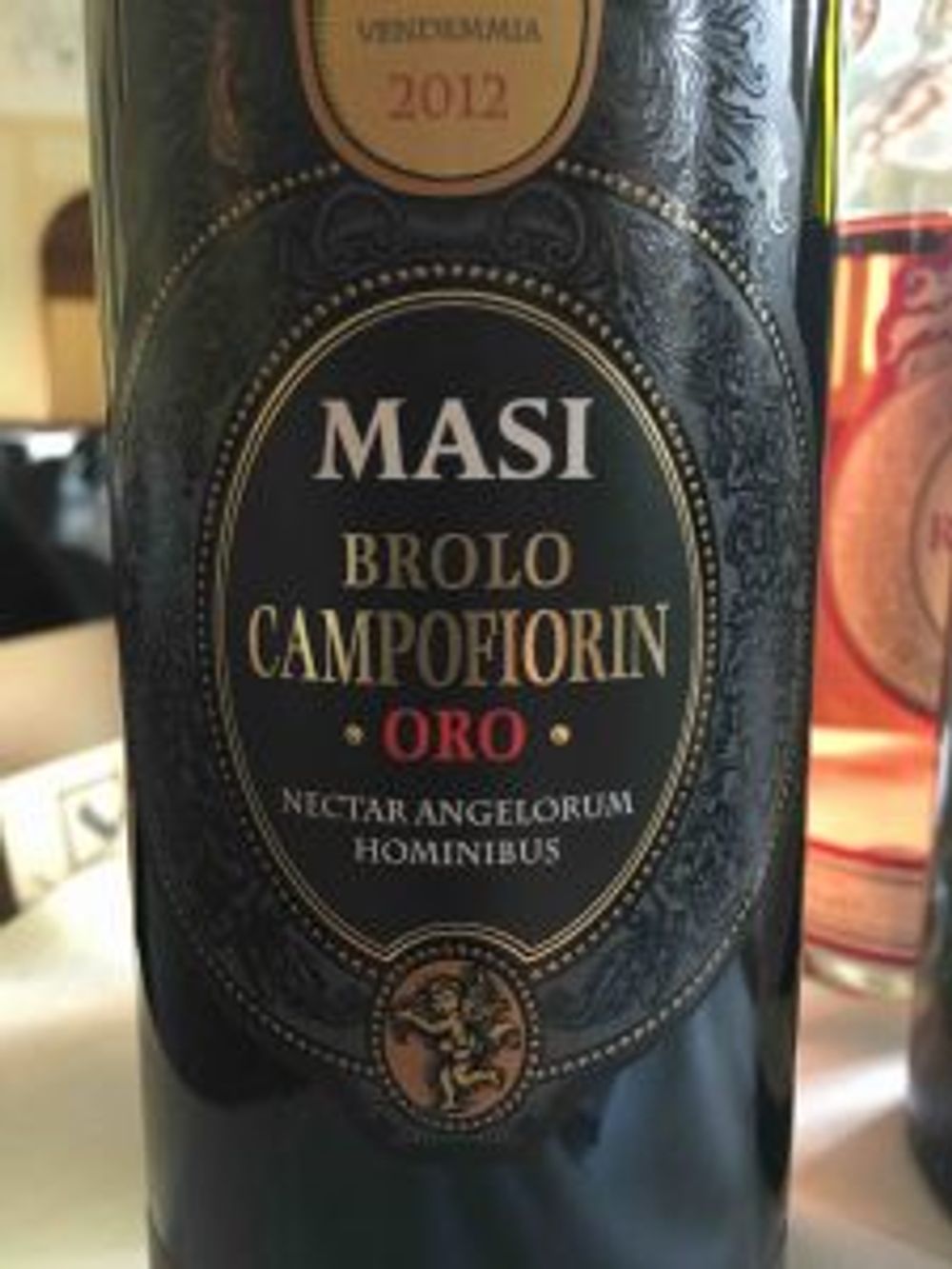
Brolo Campofiorin Oro 2012
80% corvina, 10% rondinella, 10% oseleta
Like the Campofiorin, this Rosso del Veronese is produced using Masi’s double fermentation method. Immediately after harvest, freshly-picked grapes were fermented, the oseleta ripened at the end of October, was vinified separately. At the end of November a third wine with 30% semi-dried corvina grapes was added to the blend, provoking a refermentation process, malolactic fermentation followed immediately. The wine then spends 24 months in 600l “fusti veronesi”, 70% of which were medium toasted, followed by a minimum of four months in bottle prior to release.
Of the three grapes in this blend the corvina brings black cherry fruit, the rondinella backbone and acidity and the oseleta incredible concentration. It was thought that oseleta had become extinct but a vineyard was discovered and the grape brought back into circulation by the Boscaini family. It is an ancient grape from Verona with small bunches and grapes the size of capers that only have two seeds.
On the nose this is somewhere between Valpolicella and Amarone. Big and structured with a good woody structure but still quite elegant, and very true of its place, very Northern Italy. 14% ABV
The tasting concludes with two Amarone della Valpolicella Classico, Masi’s cru wines that each have about 14,000 bottles produced but only in exceptional years.
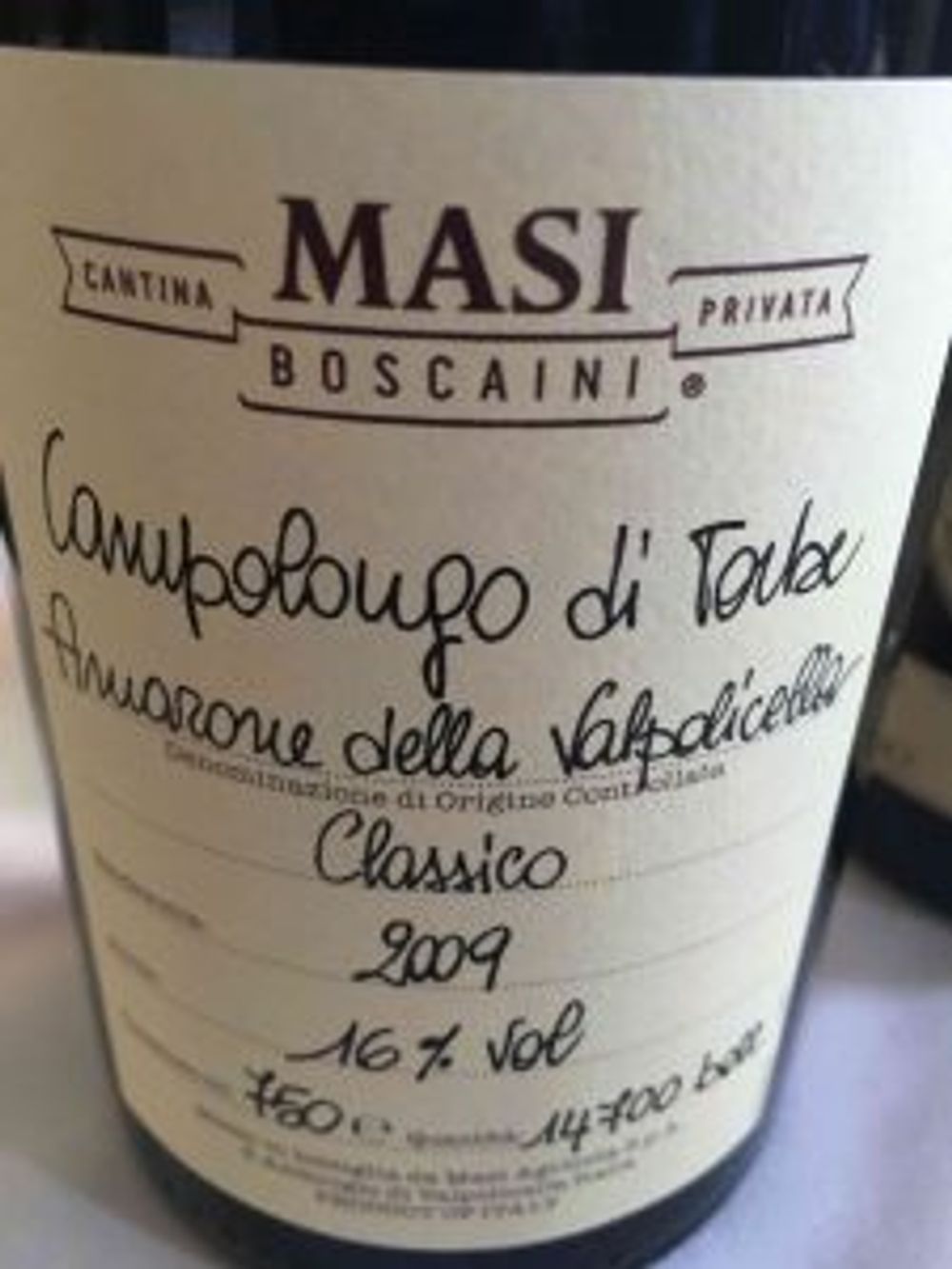
Campolongo di Torbe Amarone Classico 2009
70% corvina, 25% rondinella, 5% molinara
Masi’s Cru wines come from single vineyards sites, terroirs identified as the finest within Valpolicella. The historic Campolongo di Torbe vineyard (730m) has been renowned for quality since the 12th Century, the wine itself is a a reference point wine, with unique characteristics.
This wine has been matured for three years at cold temperatures, with 60% of the wine in 30-40hl Slavonian oak barrels and 40% in a mixture of new, second, third and fourth-fill 600l Slavonian and Allier oak casks, followed by a minimum of six months in bottle prior to release. There are almost 37 g/l dry extracts.
What is immediately noticeable about this Amarone is the power of the acidity that keeps everything in check. On the eye it is black, almost 100% opaque – you cannot see anything through the wine. The nose is complex, fresh and spicy, the palate is full-bodied, rich and powerful but balanced with a terrific smoothness and silky tannins. The finish is almost endless. This is quite extraordinary, elegant wine. Very impressive. 16% ABV
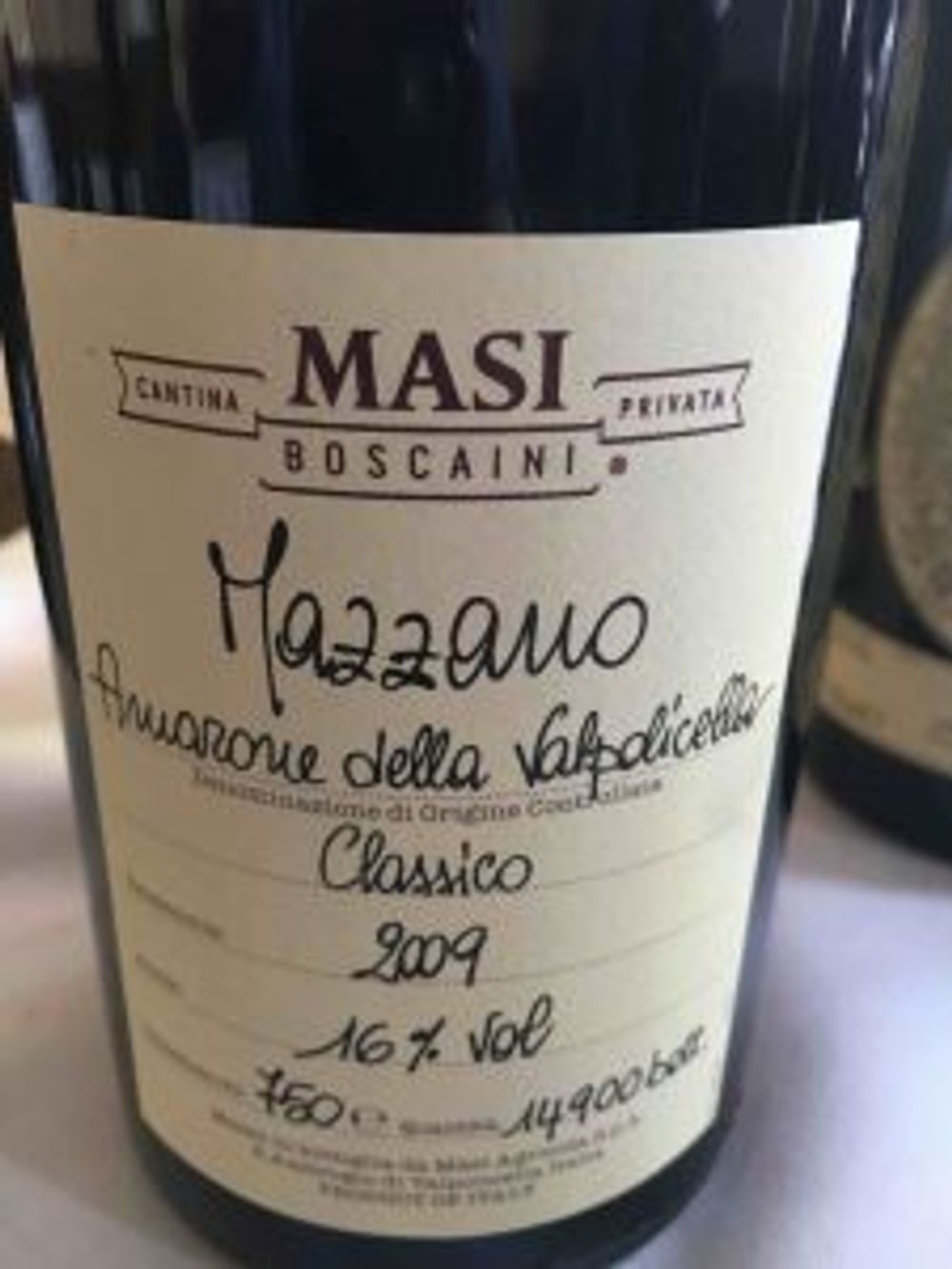
Mazzano 2009
75% corvina, 20% rondinella, 5% molinara
Compared to the Campolongo di Torbe this feels much drier – it has 3.45 g/l of residual sugar compared to the Campolongo di Torbe’s 10 g/l – and has less of a fruit profile. There is cassis, black fruit and spice and the wine is clearly of the highest pedigree but it is nowhere near as approachable.
The wine is more tannic and has a pleasing dry finish but we are dealing with a pup here. Where the previous wine could easily be drunk now until 2030, you probably wouldn’t want to get this bad boy out of the cellar until at least that date.
This wine has been matured for three years in a mixture of new, second and third-fill 600l Slavonian and Allier oak barrels, followed by a minimum of six months in bottle prior to release. From vineyards 400m high. 16% ABV
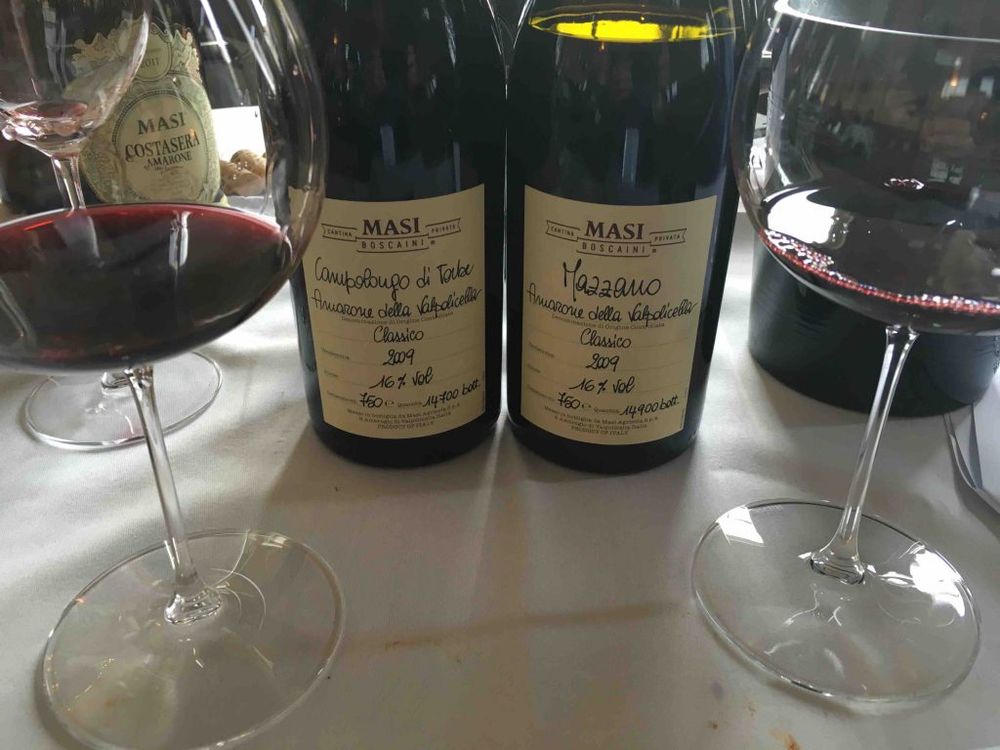
Memories are made of this































